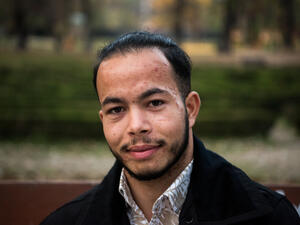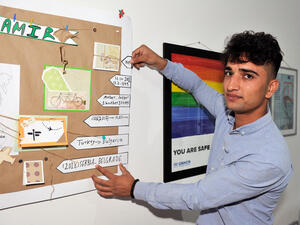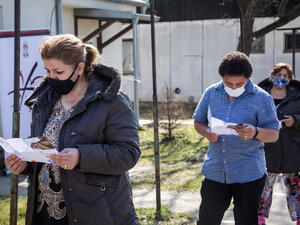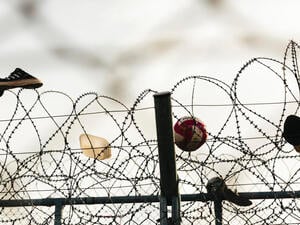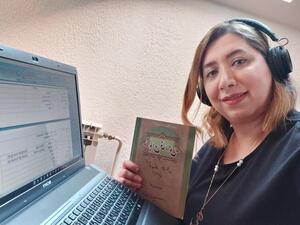Kosovo Crisis Update
Kosovo Crisis Update
Returns
Returns to Kosovo of refugees and displaced people from neighbouring territories have steadily dropped as the vast majority of the refugees have already gone home. Over the past two days, 7,700 returned to Kosovo - 3,300 on Monday and 4,400 on Tuesday.
The count includes 1,531 Kosovars who went on convoys organized by UNHCR, the International Organization for Migration, NGOs and NATO troops in Albania and Kosovo.
From Montenegro, 600 Kosovars went home on Monday and 200 on Tuesday. The figures include 182 Kosovars who went on UNHCR's convoys.
Departures from the FYR of Macedonia totalled 200 on Monday and 467 on Tuesday. Returns from Albania were 2,500 on Monday and 3,700 on Tuesday.
The highest recorded returns since the massive repatriation movement began were on 24 June, when more than 50,000 Kosovars went back spontaneously - 26,700 from Albania, 19,000 from the FYR of Macedonia and 4,500 from Montenegro.
Kosovo
One month after resuming operations in Kosovo, UNHCR has put together distribution infrastructures across Kosovo and is now encouraging people to return to their homes and begin repairs.
Seven offices have been established since UNHCR resumed operations in Kosovo on 13 June. The organization is now focusing on its shelter programme in the days ahead, before the onset of winter.
Initial surveys conducted by UNHCR and its partners indicate that 40,000-50,000 homes across Kosovo are uninhabitable. However, UNHCR is urging returnees to start emergency repairs wherever this is feasible. This will be supported over the next two-three months with UNHCR's basic, dry shelter kits - plastic, wood strips, nails, tools. Thereafter, the focus will be on making houses winter-proof. UNHCR is urging other agencies to begin immediate reconstruction of homes, apartment buildings and damaged infrastructure.
There are now 12 NGOs active in the water and sanitation sector. They are initially cleaning contaminated wells. For example in Decane alone, 39 of 44 villages are reported to have wells contaminated by corpses. Some work is also being done on public water supply systems, including the provision of chlorine and tools, additional storage capacity and minor repairs. An assessment of the public water supply systems is now in progress. The collection of solid waste from the towns is of growing concern. In Pristina, this is being done with the support of the British KFOR.
Food is provided in Kosovo by the World Food Programme and the U.S. Food for Peace through the seven distribution hubs where UNHCR has offices - Pristina, Pec, Prizren, Urosevac, Gnjilane, Djakovica and Kosovska Mitrovica.
The implementing partners are the Norwegian Refugee Council, Catholic Relief Services, International Rescue Committee, CARE, Action Against Hunger, Children's Aid Direct, Solidarité and Mercy Corps International. These partners supervise distribution from the seven hubs to the local level, where the Albanian charity Mother Teresa Society distributes the food directly to the beneficiaries.
The Mother Teresa Society has traditionally carried out the bulk of final distribution in Kosovo. Although its assets were hard-hit during the conflict, it is still the main distribution channel for both food and non-food items, handing out more than 75 percent of aid on the local level. ICRC is also providing food in some areas through the Yugoslav Red Cross.
Basic commodities distributed include 12 kilogrammes of wheat flour, one kilogramme each of oil, pulses and sugar per month per person. No rice, salt or canned food is available in any quantities in Kosovo. Bread is distributed in Prizren and Mitrovica. A bread project is planned to focus over two-three months on the 10 main urban areas. Ration cards have been prepared in three languages (Albanian, English, Serb) and will be used on a pilot project basis in Pec through Mercy Corps International.
The aim is to distribute food to 1.1 million people for an initial 90 days. However, it is still difficult to produce an accurate figure for persons actually receiving food. WFP reports an estimated beneficiary caseload of some 750,000 and puts the amount of total food distributed so far at some 6,000 metric tons.
Security
UNHCR is alarmed at increasing reports of attacks against the minority Serb and Roma communities in Kosovo despite repeated appeals for reconciliation and ethnic harmony.
In Pristina on Monday, two ethnic Serb refugees - one from Bosnia and the other from Croatia - were reported to have been kidnapped from the Hotel Bozur, a collective accommodation facility where the refugees were living. KFOR later evacuated 28 refugees from the facility to Kosovo Polje, where other minorities are sheltered.
The population of Roma seeking sanctuary near the cemetery at the Brekovac (Brekoc) area has grown to approximately 500 with new arrivals from Coloni neighbourhood east of Djakovica.
The burning of Serb houses in the Prizren area continues daily. In the last week, 60 houses were torched in the Prizren municipality, including 10 in the main town over the weekend.
The Orthodox Church in Prizren, which is now caring for 167 displaced Serbs and Roma, has received threats of attack. KFOR troops have stepped up patrols in the area.
UNHCR Podgorica reports that between 9 June and 4 July, around 22,000 Serbs and Roma entered Montenegro from Kosovo. A large group of Roma has been camping out near the port of Bar, unwilling to accept accommodation in tent sites in Ulcinj.
KFOR, the international security force in Kosovo, and the Kosovo Liberation Army have expressed concern about reports of criminal activities allegedly carried out by well-armed Albanian gangs in KLA uniforms in the Djakovica area. In the last 10 days KFOR troops have found the bodies of nine murder victims, including a woman and a child.
Returns from third countries
Governments hosting some 92,000 Kosovo Albanians evacuated from the FYR of Macedonia under the Humanitarian Evacuation Programme have endorsed UNHCR and IOM's coordination role in returning the refugees on a voluntary basis.
During a three-hour meeting in Geneva on Monday (July 12) organized jointly by UNHCR and IOM, representatives of 29 governments and the FYR of Macedonia agreed that the return of the evacuees must be orderly.
Governments expressed support for UNHCR's voluntary return guidelines and generally accepted UNHCR's position that uncoordinated movements organized on a bilateral basis could create "chaos" and hamper rather than foster the return operation.
It was agreed that the host governments will signal an intended return movement to UNHCR and IOM. UNHCR and IOM will then secure a landing slot and onward transport as well as inform the refugees about conditions on the ground. IOM said the coordination hub will be in Skopje.
UNHCR expressed the hope that Pristina airport may become operational for return flights "in a couple of weeks.



